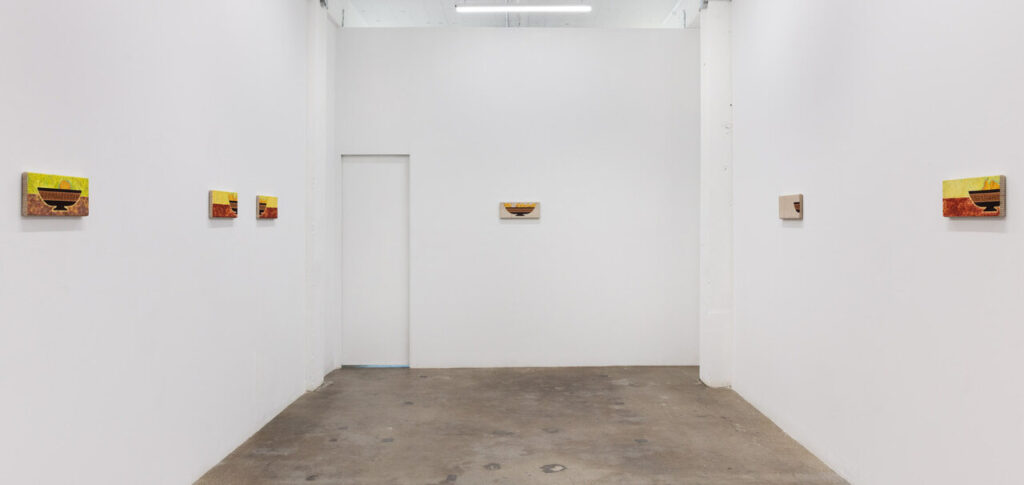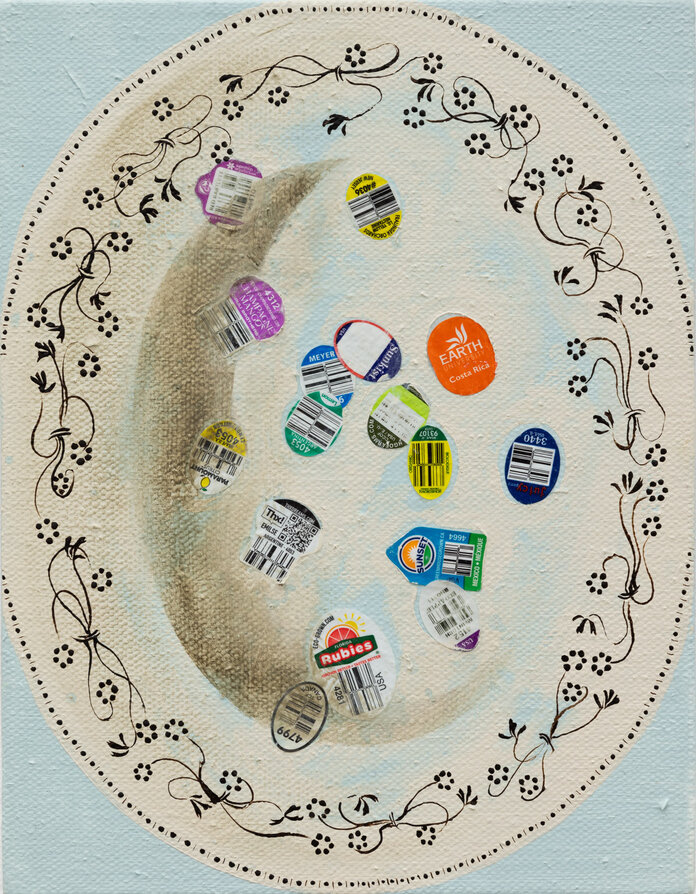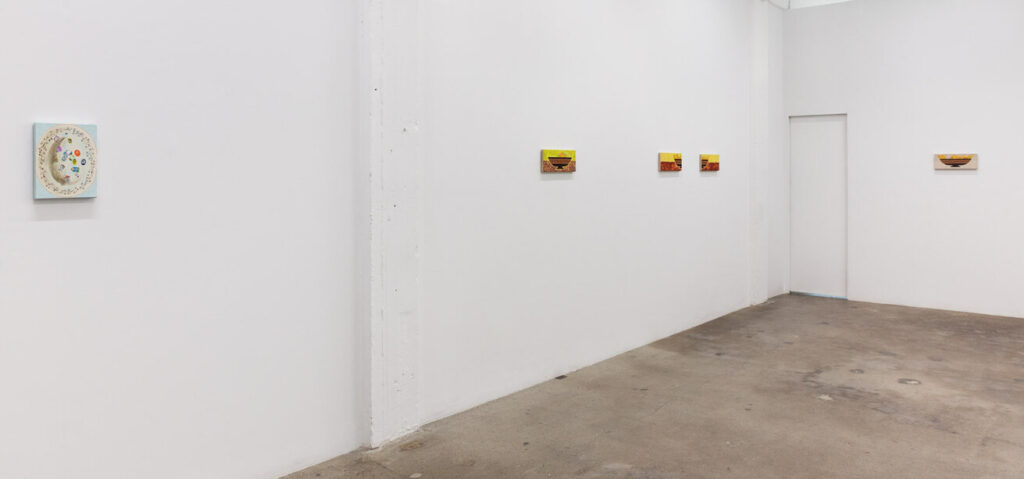Elif Saydam’s RAUS at Franz Kaka is more akin to an installation or a conceptual artwork than a collection of new pieces like one would expect from an exhibition of paintings. The exhibition is a series of seven still life, each a variation of a bowl of pears, which is either full, empty or somewhere in between. An uncomplicated narrative of a fruit bowl gradually being emptied. It seems straightforward, but art never is that simple. RAUS, meaning “out” in German, is fraught with allusions that raise questions about border control, social mobility, and what truly constitutes as citizenship.
Installation view of Elif Saydam, RAUS, 2025 at Franz Kaka
Stepping into the gallery, one is first faced with “Marginalized!” hanging on the far, opposite wall of the entrance. This is the bowl at its fullest. In the background, there is a vertical red line threaded through the canvas, off-centre to the left, like the margins in a sheet of lined paper. One of the pears in the bowl is separated from the rest, literally placed in the margins over the red line, over a border that is embedded into the very structure of the canvas. This is the single instant we see the bowl full, except in “Aufenthaltstiel” and “Niederlassungserlaubnis”, though they each only show half of the bowl. They are hung side by side, but again they are separated, this time by actual physical space on the wall.
Elif Saydam, Marginalized!, 2025, oil on linen and cotton, handwoven by artist, 6 x 15 inches
Just a few feet from the entrance, two red threads are strung along the width of the room, high enough to be able to walk underneath. Even within the gallery space, we are moving through and across a delineated border. This border seems to segregate the paintings of bowls with pears from the one of the bowls emptied. “Zusatzblatt” has a different size canvas and point of view than the rest of the still life paintings, which are otherwise all the same in size and orientation. The empty bowl is shown from above, with just the grocery price look-up stickers left behind. Each sticker names a country or city from which the fruit came, the only things reminding us of what used to be there, ultimately branding them as foreign.
Elif Saydam, Zusatzblatt, oil, acrylic and stickers on linen, 8 ½ x 11 inches
Going beyond just the content of the paintings, and addressing even more the theme of borders, Saydam titles several of the still life pieces after German governmental papers that administrate immigration and work status. For example, Fiktionsbescheinigung, literally meaning “fictional certificate”, refers to the document that gives someone the temporary right to stay and work in Germany, while awaiting approval of a residency permit, or an Aufenthaltstiel. With these titles, the sequence of the emptying fruit bowl becomes one of being categorized, separated, and shut out, much like the policies of immigration and work status they are named after.
Installation view of Elif Saydam, RAUS, 2025 at Franz Kaka
Saydam reminds us that art can never stand on its own, and that it is always political. In a world embedded with social medias and information overload, RAUS asks us to deny neutral framings, or to go beyond our personal reactions to the images and surface-level news stories we are bombarded with every day. In a world where being politically aware may be more important than ever, nothing is ever just a bowl of fruit.
Rebekah Barona
Images are courtesy of Franz Kaka.
*Exhibition information: Elif Saydam, RAUS, February 14 – March 15, 2025, Franz Kaka, 1485 Dupont St. #208, Toronto (access at 300 Campbell Ave). Gallery hours: Thursday – Saturday 12 – 5 pm.




